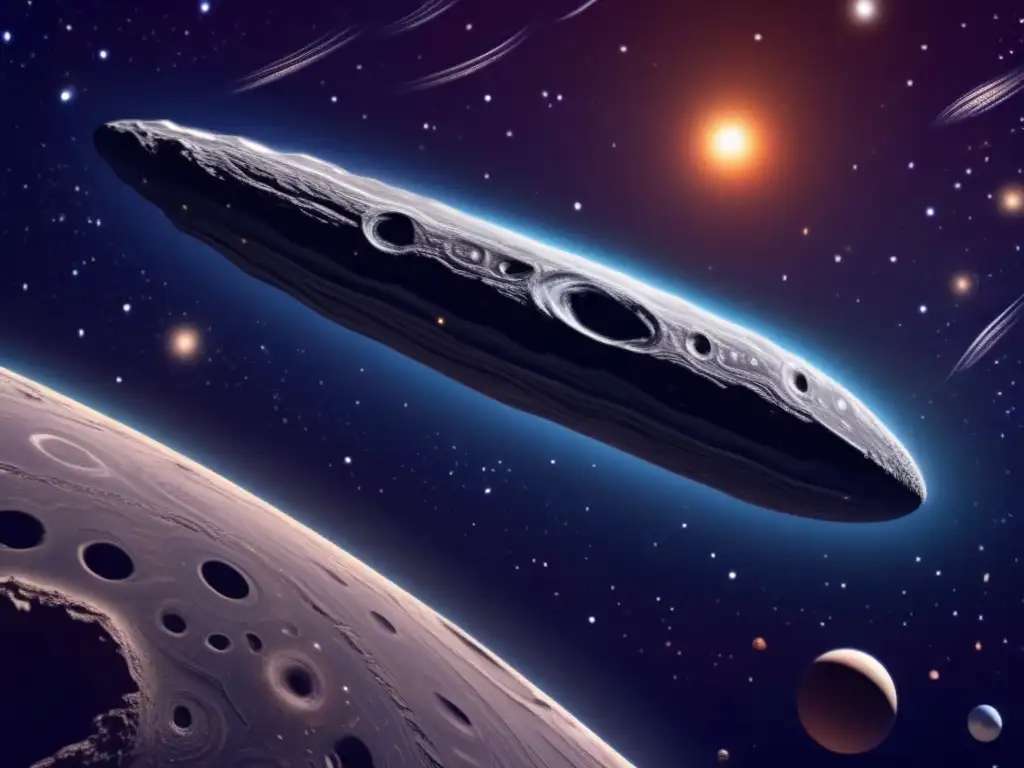"The Detection And Tracking Of Near-Earth Asteroids"

Introduction
Near-Earth Asteroids (NEAs) are asteroids whose orbits come close to Earth. They are integral to the study of planetary science, as they provide insight into the formation and evolution of the Solar System. However, their proximity to Earth also makes them a potential threat if they collide with our planet. Hence, detecting and tracking NEAs is essential to our understanding and management of these celestial objects.
The Importance of Detecting and Tracking NEAs

Monitoring Potential Impact Threats
The primary reason for detecting and tracking NEAs is to identify any potential threats of impact with Earth. If an asteroid were to collide with our planet, it could cause global devastation, equivalent to a nuclear explosion. By detecting and tracking NEAs, we can determine their orbits and predict their future paths to assess the likelihood of an impact.
Exploration and Resource Utilization
NEAs contain valuable resources such as water, metals, and other minerals that could be exploited for space exploration or even terrestrial purposes. Detecting and tracking these asteroids can help us identify targets for future space missions and plan resource extraction strategies.
Planetary Science Research
NEAs are the remnants of the early Solar System and hold clues to its formation and evolution. The study of NEAs can help us understand the composition, structure, and dynamics of the Solar System, as well as the processes that led to the formation of terrestrial planets like Earth.
The Methods of Detecting and Tracking NEAs

Ground-based Telescopes
Ground-based telescopes are the primary methods used to detect and track NEAs. They rely on visible or infrared light to detect and image the asteroids. The data collected can be used to measure the asteroid's size, shape, rotation rate, and other properties that can help us understand more about its composition and motion.
Space-based Telescopes
Space-based telescopes can observe NEAs in wavelengths that are not accessible from the ground, such as ultraviolet or X-ray spectra. They also avoid the atmospheric distortions that affect ground-based telescopes, enabling better resolution and accuracy of measurement.
Radar Observations
Radar observations involve sending radio waves towards an asteroid and then measuring the time it takes for the waves to bounce back. This method can accurately determine the asteroid's distance, speed, and size, as well as its surface features and composition, even in cases where the asteroid is not visible from Earth.
The Future of NEA Detection and Tracking

The Large Synoptic Survey Telescope (LSST)
The LSST is a new ground-based telescope currently under construction in Chile. Its advanced capabilities will allow it to detect and track NEAs with unprecedented accuracy, enabling better predictions of their orbital paths and potential impact threats.
The Asteroid Impact and Deflection Assessment (AIDA) Mission
The AIDA mission is a collaboration between NASA and the European Space Agency (ESA) aimed at testing the effectiveness of asteroid deflection methods. It involves two spacecraft - one to collide with the asteroid and the other to observe and measure the effects of the impact. The data gathered will help us develop better strategies for mitigating the potential threat of NEA impact.
The Near Earth Object Surveillance Mission (NEOSM)
The NEOSM is a proposed space-based mission that would use infrared sensors to detect and track NEAs. It would also investigate their composition, size, and other properties that can help us understand the origin and evolution of the Solar System.
Frequently Asked Questions

-
How likely is an asteroid impact with Earth?
The probability of a catastrophic asteroid impact is relatively low, but the potential consequences are significant. Detecting and tracking NEAs is essential to our ability to predict and prevent such events.
-
What are the resources available on NEAs?
NEAs contain valuable resources such as water, metals, and other minerals. Exploiting these resources could further space exploration and provide economic benefits for Earth.
-
How can we deflect an asteroid from impacting Earth?
Several strategies have been proposed for deflecting an asteroid, including kinetic impactors, gravity tractors, and laser ablation. The AIDA mission will test the effectiveness of some of these methods.
-
Is there a comprehensive database of known NEAs?
Yes, NASA's Near-Earth Object Program maintains a comprehensive database of known NEAs, their orbits, and potential impact threats.
-
How can I get involved in NEA detection and tracking?
You can support organizations such as the Asteroid Institute, or participate in citizen science projects like the Asteroid Tracker project to help spot and track NEAs.
Conclusion
NEAs are fascinating celestial objects that hold significant scientific and economic potential. Detecting and tracking NEAs is essential to our understanding and management of these objects. The future of NEA detection and tracking looks promising, with new technologies and missions being developed to improve our capabilities. It is crucial that we continue to invest in these efforts to ensure the safety and progress of our planet and space exploration.
Thank you for reading this article in Asteroid Realm. We encourage you to share your thoughts in the comments section below and to engage positively with our website by subscribing and sharing our content on social networks.
Additional Resources

- NASA's Near-Earth Object Program
- Asteroid Institute
- The Large Synoptic Survey Telescope
- The Double Asteroid Redirection Test (DART)
- The Asteroid Impact and Deflection Assessment (AIDA) Mission
 "Revealing Ryugu: The Target Of The Hayabusa2 Mission"
"Revealing Ryugu: The Target Of The Hayabusa2 Mission" "The Curious Case Of Asteroid (29075) 1950 DA"
"The Curious Case Of Asteroid (29075) 1950 DA" The Tale Of 'Oumuamua: An Interstellar Visitor
The Tale Of 'Oumuamua: An Interstellar VisitorIf you want to discover more articles similar to "The Detection And Tracking Of Near-Earth Asteroids", you can visit the Asteroid Discoveries category.
Leave a Reply

Articulos relacionados: